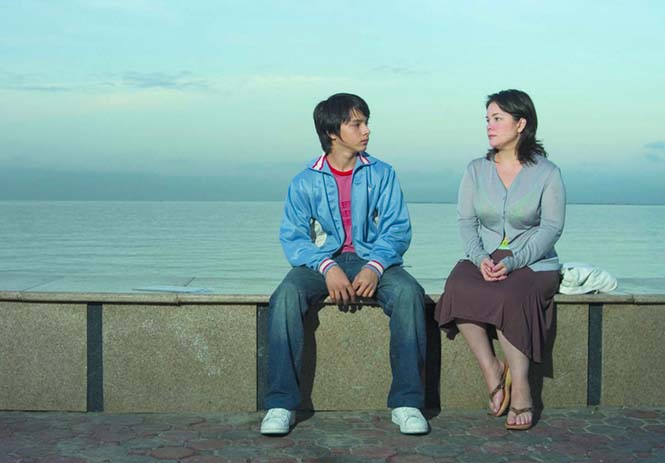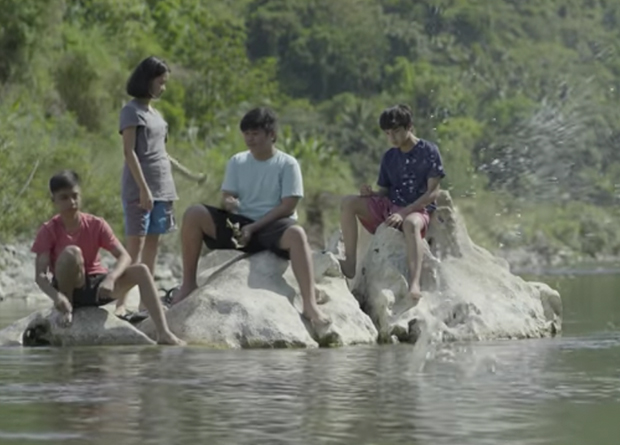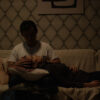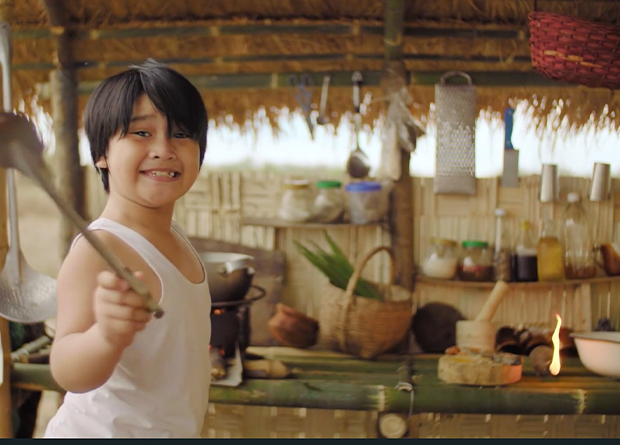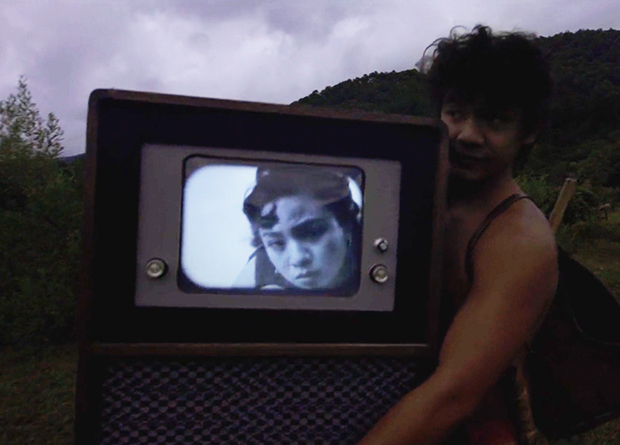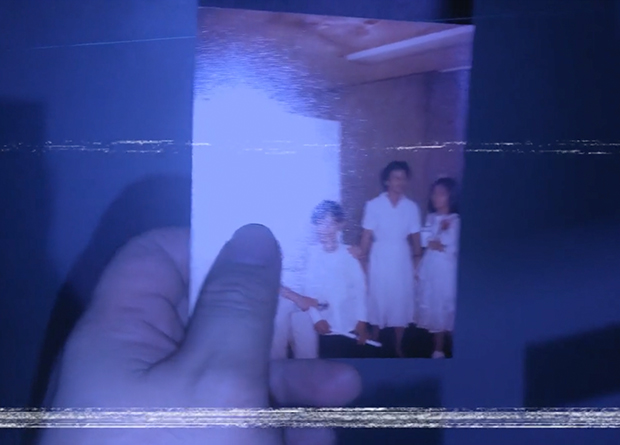Easily, this film reminds one of Ang Pagdadalaga ni Maximo Oliveros (that is, in the blossoming of a young gay boy), though this time, the flick is set in some far-flung rural area (instead of the gutters of a city). But comparisons ought to stop there; and rightly so, because this film – particularly the last parts – feels more like propaganda for the Armed Forces of the Philippines than anything else.
And this is too bad for a film that wanted to show what it’s like for the children of military men, trying to live normally while (on a daily basis) waiting for news about their fathers (and yeah, it just had to be about MEN in uniform, right?).
WHAT IT’S ABOUT
Maricel Cariaga’s Children of the River tells the story of four kids who live in a town near a river (even if the river doesn’t play significance to the story). While going about their simple lives (and growing up while doing this), they also await news about their fathers in the military.
WHY WATCH IT
Every film ought to be always commended for its attempt to exists; and here, this one merits this, too.
It is fortunate that this is not exactly a bad, bad film.
For instance, there are some pretty shots – e.g. that drone shot of the three bangkas/dinghies that reminded me of shots from Musmos na Sumibol sa Gubat ng Digma (Unless the Water is Safer than the Land).
The attempt to tell a Maximo-like story, this time in a rural setting (and of course, with somewhat different context), is also… worth mentioning. Elias may not be as memorable as Maxie; but he is… cute enough, if that’s the intention here.
Then there’s
the telling of a rural culture. We almost always see narratives about the city
life (e.g. the pretentious Buy Bust),
or, for narratives about rural living, it’s almost always using the lens of a
city dweller being there (e.g. in this year’s Cinemalaya festival, ANi comes to mind). And so this telling –
like John Denver Trending – is a welcome
addition.
The cast included: Noel Comia, Jr., Ricky Oriarte, Dave Justin Francis, Junyka Santarin, JR Custodio, Juancho Triviño, Jay Manalo, Rich Asuncion, Kareen Oriarte, Jennifer Acosta and Ma. Luisa Herrera.
Aside from Cariaga, production included:
Cinematography: Hector Calma
Production design: Joseph Arcegono
Editing: Maricel Cariaga, Jerome Dulin and Zig Dulay
Original music score: Lorenzo Neilsen
Sound: Wildsound Studios


WHY AVOID IT
But this is a flawed film. In many ways. And this is perhaps highlighted by what it can be summed up as, i.e. propaganda flick.
To start, this question needs to be asked: Where’s the river?
No, the river does not have any role in the story (aside from one beautiful drone shot). I understand the metaphor (that these people are simply going with the flow of the river of life); but this isn’t A River Runs Through It or The Memory of Fish or Into the Wild. Here, the river’s just… there; inconsequential but for its inclusion in the title.
No focus.
This really shouldn’t be titled Children of the River. I’d say Elias of the River is more apt.
Here’s the thing: It is always difficult to give exact amount of screen time even to all lead characters. This is why, for the likes of Sex and the City or Queer as Folk to work, the stories of the characters were developed lengthily (via TV series). By the time the entire series ended, we could identify with one of the characters; we know of them, and we could perhaps see parts of ourselves in them.
When this is attempted in a movie, you’d have a hard time developing all of the characters. And this certainly apparent here, with only one of the characters fully developed (and even this development is forced), i.e. Elias. This makes his friends tokenistic; placed there only to boost his narrative.
Forced story development. Forced acting.
This is worth highlighting: Elias unexpectedly fell in love with an elder man (as I said, hello Ang Pagdadalaga ni Maximo Oliveros!), came out (to himself and the people around him), and accepted his SOGIE in – get this – a span of weeks. I myself grew up gay in Kidapawan when it was not even a city yet, and I tell you, it’s not this easy; it never is. So forcing this narrative just to tie loose ends is… lazy.
Others that come to mind include: the bully just realized his “mistake” after a few days, and want them to be all besties; the make-up application to effeminize Elias; the acceptance of his friends of his being gay (and this is even if one doesn’t even know of this; while the other just accidentally heard it being discussed, and yet was not part of the conversation about it).
The preaching.
Stylistically, there’s this tendency to tell us, not show us. For instance, Cariaga tells us that the place is somewhere far/hard to reach/provincial. But she doesn’t really give us an encompassing look of this place, so we’re supposed to just take her word for it.
I’d say think Onang, Chocolat or Panaghoy sa Suba or even Edward Scissorhands, with all of these films giving us a look at their settings, instead of just telling us “this is a close-knit rural place that is hard to reach and does not even have proper Internet connection”).
Please: SHOW, DON’T TELL.
Token representations. It’s almost like the director wanted to cover her bases; so we get the chubby guy, the cute guy, the girl (who may be a lesbian), and the gay guy.
Technical issues – e.g. the dubbing while Elias was singing.
Dialogues.
Many remain critical with the lines given to Nora Aunor because, as delivered, there’s just no way real people talk that way. This is the same here; with characters too-often too-obviously just reading aloud memorized lines (e.g. “Hindi naman nakikita sa katawan ang kakayahan ng isang tao” – delivered a la monologue)
Too-fake elements – e.g. check those toys, and how they all wear their father’s uniforms while playing cops-and-rebels; how the female “crush ng bayan” stood up for her brother; and the stagey set-up of the house of the albularyo (traditional healer).
And then there’s this: Propaganda. Which highlights this lack of empathy for the “other”. And this is perhaps emphasized by the lines of Jay Manalo, who kept stressing the bravery of the soldiers who go to war, and refusing to not fight anymore because, as he said, if people started thinking like Elias (who asked him to think of his family; what will happen to them if he also died in battle), then no one will fight for the country.
Let me mention this because this is actually anti-LGBT in a supposedly pro-LGBT film: When the father told his son he accepted him, he also said that it’s good because it would mean that he won’t be like him (a soldier), insinuating that LGBT people can’t/won’t be soldiers. This is ignorant; and is inconsistent/detrimental to the overall intent of the flick.
When I interviewed the director, Cariaga, after the gala of the film, I asked her how the film appeared as propaganda for the military. She said, and I quote, “We will side with what’s right.”
I told her that some (if not majority) of the abuses done against the people that the military is fighting against are (also) done by the State and its forces (e.g. military). Think of the Lumad schools that are closed by the military, who then turn these schools into HQs. Think of the Indigenous Peoples who are fighting for their ancestral domain; and are then attacked by State forces that back private interests (e.g. mining companies). And think of how the voices of the “other”/those opposing the military are treated as just that, the “other”, by her film.
Cariaga said that her intention was to make a “pro-peace film”, that “sana wala na lang quarrels.”
And I suppose this is why this film falters. It wants to be this grand tale, ending up promoting just the one side of any struggle while othering another/the other…

IN THE END
How wars/conflicts affect the lives of children isn’t rare in cinema – e.g. Come and See by Elem Kimov; or Forbidden Games by René Clément; or – perhaps closer to this flick – Hope and Glory by John Boorman. And – in actuality – looking beyond the coming-of-age narratives in Children of the River, this is what this film is really supposed to be about. Except that it then ruined that with its propagandistic approach…

























